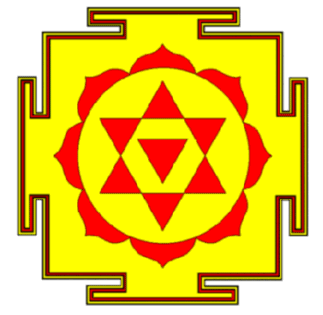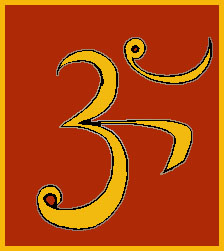
April 13th, 1998
 |
Issue# 1999.00 April 13th, 1998 |
 |
 |
 |
Aditi Chaturvedi In 570 AD, the year of Muhammad's birth, Arabia was a thriving, rich and varied Vedic culture. Although monotheism in the forms of Christianity and Judaism were known to the people of Arvasthan, they were undeterred in their uncompromising faith to the religion of their ancestors: Hinduism . Every household had an idol of a Hindu god or goddess. There were hundreds of sacred groves, places of pilgrimage, and temples which were sanctuaries containing images of the entire range of Vedic gods. The temples in addition to being the religious focus of the Arabs, were also the cultural centres of learning. It was the temples that were the venues of literary and poetry competitions, of glorious festivals. The virtues most highly prized by people of Arvasthan were bravery in battle, patience in misfortune, loyalty to one's tribe, and generosity to the needy and the poor. They proudly upheld the value of tolerance in matters of religious practice and belief. The respect they showed towards other people's religions was fully in keeping with their Vedic spiritual tradition. The status of women was that of pride and equal respect. How could it be otherwise with a people whose chief deity was the goddess Durga (Alla). Women married men of their choice and were financially independent. They were entrepeneurs, artisans, poets and even warriors! Later on Muhammad would marry Khadija, who was not only a wealthy merchant but also in the position to choose her own husband. This clearly demonstrates the level of freedom women enjoyed in Vedic Arabia. Hind, who was the wife of Muhammad's chief enemy Abu Sufyan, herself participated in the battlefield. Hind opposed Muhammad tooth and nail. She followed her husband to the battlefield and when Abu Sufyan surrendered Mecca to Muhammad without a fight she caught hold of him in the marketplace and cried:
When Muhammad tried to baptise her & asked her not to commit adultery , She spat out the bitter words: How proud this woman was of the rights and privileges that her Vedic society had invested to her! It was Islam that extinguished the light of knowledge in Vedic Arabia. It is ironic that the man who brought about such darkness himself belonged to the Qurayshi Tribe of Mecca. The Qurayshi were particularly devoted to Allah (Durga) and the famous Shivling of the Kaaba Temple. The fact that the Shivling remains to this day in the Kaaba is solely due to the fact that it happened to be the Qurayshi tribe's faceless Family Deity. As I mentioned before Muhammad's name itself came from Mahadeva, which is another cognate for Lord Shiva. Muhammad's own uncle, Umar-Bin-E-Hassham was a staunch Hindu and fervent devotee of Lord Shiva. He was a renowned poet and wrote many verses in praise of Shiva. One of these has survived on page 235 of Sair-Ul-Okul and reads as follows: Kaluwan amataul Hawa was Tajakhru We Tajakhayroba udan Kalalwade-E Liboawa Walukayanay jatally, hay Yauma Tab asayru Wa Abalolha ajabu armeeman MAHADEVA Manojail ilamuddin minhum wa sayattaru Wa Sahabi Kay-yam feema-Kamil MINDAY Yauman Wa Yakulum no latabahan foeennak Tawjjaru Massayaray akhalakan hasanan Kullahum Najumum aja- at Summa gabul HINDU and irreligion or waste it in lechery and wrath If at least he relent and return to righteousness can he be saved? If but once he worship Mahadeva with a pure heart, he will attain the ultimate in spirituality. Oh Lord Shiva exchange my entire life for but a day's sojourn in India where one attains salvation. But one pilgrimage there secures for one all merit and company of the truly great. Muhammad's uncle was one of the resident priests of the Shiv temple known as "Kaaba". This sacred sanctum was decorated in an extremely rich and beautiful fashion. The Kaaba was astronomically oriented to face the winds. The minor axis of the rectangular base of the Kaaba was solistically aligned towards summer sunrise and winter sunset. It contained 360 statues of Vedic deities and was a shrine primarily associated with sun worship. The temple was an architectural representation of an interlocking set of theories covering virtually all creation and comprehending chemistry, physics, cosmology, meteorology and medicine. Each wall or corner of the Kaaba was associated with a specific region of the world. Thus this glorious Hindu temple was made to symbolically represent a microcosm of the universe. The Arabs would face east when praying. This representation of a microcosm demonstrated by the eight directional structure was derived from the Tantric pattern (Refer to Figure 1) of Hinduism. Right at the centre of the Kaaba was the octogonal pedestal of Bramha the creator. Today this very pedestal is called Maqam-E-Ibrahim by the Muslims.  Figure 1. A tantric pattern which defines the structure of Kaaba However, more significant was the fact that the Kaaba was an extremely rich and ornate temple. On its walls hung innumerable gold plaques commemorating the winners of the annual poetry competition known as the Okaj fair. There were gold, silver and precious gems everywhere. It is no wonder that Muhammad armed with his facade of a new brand of religion set out to capture the immense wealth of the Vedic shrine of Mecca. After plundering the riches of the Kaaba, the wealth enabled him to systematically destroy all traces of the religion that threatened him so directly. It is an indisputable fact that money will make any low criminal devoutly religious in a hurry. Despite the fact that Muhammad had to destroy all traces of Hinduism in order to make his "new religion" work, he knew that in order to fool people convincingly he would have to borrow from the Vedic culture that surrounded him. Being illiterate he picked out rituals and symbols that he didn't understand and distorted and falsified them for his own ends. Here is a list of these distortions:
 Figure 2. Read from right to left this figure of OM represents the numbers 786 There are many such instances where the symbols and rituals of Vedic culture were completely distorted and falsified by Muhammad in his bid to "create" his brand new religion. However in his haste to deceive and because of his ignorance and illiteracy, thousands of Vedic symbols still remain. Although they have been distorted beyond imagination, they still remain as solemn reminders of Arabia's glorious Vedic past. They can never be supressed. In fact the rise of Islam put a full stop to all the previous knowledge of Arabia. The imperialistic message of Islam diverted all energies into raiding, looting and destruction. The incentive to learn and preserve the Vedic wisdom that had thrived in Arabia for so many centuries, was wiped out by the brutal pressure of Islam. Making easy money through loot and massacre was far more appealing than upholding the tenets of ancient knowledge. Gone were the schools, teachers, libraries, poets, artists, philosophers and scholars that had littered the Vedic landscape of Arabia like stars. Everyone had to become a raider if not from choice then for the sake of surviving the absolute intolerance of dissenters, that Islam preached. Thus was the light of learning extinguished in Arabia. All that remained was the Koran, the Kalma and the murderous hatred of anything Non-Muslim. In my next article I will explore how the Arabs fought to keep the integrity and pride of their Vedic culture alive in the face of the violent, unjust and murderous destruction caused by the followers of Islam. Note: Works of P.N. Oak, Sita Ram Goel, Arun Shourie, Jay Dubashi, Harsh Narain and Ram Swarup have been used to compose this article. |
|
Previous | Index | Next Your comments |
|
© Sword of Truth, 2001 All rights reserved. Concept and Design by |